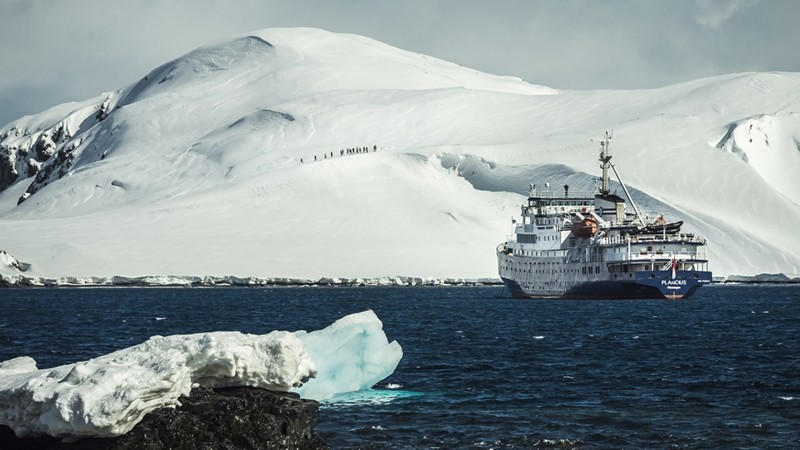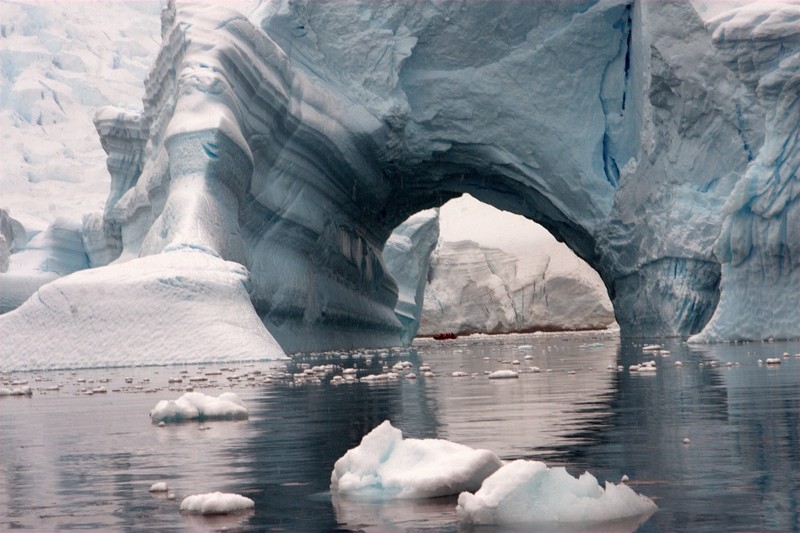Last Updated on January 10, 2017 by Nancie
13 Fun Facts about Some of Antarctica’s Most Fascinating Wildlife
When people are asked to think about the wildlife in Antarctica they come up with penguins and… actually, that’s about it. But here’s the thing – people who take an Antarctic cruise to visit the rugged and pristine beauty of our southern-most continent are sailing into an amazingly robust ecosystem. It has to be robust – it’s cold down there. Here are 13 fun facts about some of the critters that call the harsh but beautiful environment of Antarctica their home for at least part of the year.
Minke Whales
Also known as the Lesser Rorqual, marvelous Minke Whales weigh in at a petite 10 tons. This makes them the smallest of the baleen whales of the world (baleens are whales that have a sort of filter in their mouths where teeth would be found in other animals).
While cruise-goers always love meeting up with whales, a Minke that’s upwind from a ship is not always a welcome sight. Why? Because Minkes have earned the less than flattering nickname “Stinky Minke” from the surprisingly unpleasant odor emitted when they spout water from their blowholes.
Crabeater Seals
The most abundant species of seal on Earth, Crabeaters are in desperate need of a name-change for the simple reason that they don’t eat crabs. In fact, they exist on a diet made up almost entirely of krill, the same little critters that make up the bulk of baleen whales’ diets. Crabeater seals have evolved a baleen-like screen in their mouths that works just like the whales’, pushing water out while leaving delicious krill trapped inside their mouths.
Southern Right Whales
Moving up in the weight classes we come to the Southern Right Whale which tips the scale at around 47 tons. They’re big all over including having the world’s biggest testicles which can weigh up to 500kg each. For comparison, that’s roughly the same weight as an adult male polar bear!
Adélie Penguins
Adélie Penguins are one of the only two species of penguin that are found on the mainland of Antarctica, the other being the lofty Emperor Penguin. Adélies are quite the little travelers, following the sun around the Antarctic continent. This can make for staggeringly long migrations – some of them have been recorded as being as long as 17,600 km!

Weddell Seals
Weddell Seals can found further south than any other mammals in the world. Here’s another interesting tidbit – they can stay underwater for as long as 80 minutes at a time, diving as far down as 600 meters. They’re able to stay down in the depths for so long due to the fact that they have more red blood cells and more overall blood volume than other similar mammals, which allows them to carry more oxygen, using all of those extra blood cells as oxygen storage tanks.
Antarctic Petrel
There are only three species of bird that breed exclusively on Antarctica and its closest islands – the Antarctic Petrel, the Emperor Penguin, and the South Polar Skua. Petrels have a holy name; “petrel” refers to Saint Peter who managed the trick of walking on water. Petrels do much the same, having to “walk” across the water as they build speed during their take-offs into flight.
Sei Whales
Sei Whales are remarkably fast. In fact, they are one of the fastest examples of cetaceans (porpoises, whales, and dolphins) in the world, able to reach burst speeds of up to about 80 km per hour! American naturalist Roy Chapman Andrews likens Sei Whales to the cheetah – they’re amazingly fast in short bursts, but they tire out quickly.
Chinstrap Penguins
The way these dapper fellows got their common name is pretty obvious – the black “strap” circling under their chins, presumably to help keep the tops of their heads from falling off. They have another common name, “Stonebreaker Penguins”, which comes from their screeches which are so piercing that it’s said they could break stones.
Leopard Seals
Leopard Seals went viral a while ago when a female kept trying to teach an underwater cameraman how to eat a penguin. She didn’t have much luck. Named for their spots, Leopard Seals are the only kind of seal that eat other kinds of seals as part of their regular diet.
Emperor Penguins
The largest penguins on Earth, Emperor Penguins can dive to almost 550 meters, the deepest dive for any kind of bird in the world. They’re also one of the species of penguins that leap up into the air. It’s thought that this is so they can trap micro-bubbles of air in their feathers in order to reduce friction underwater, which allows them to swim faster. Scientists think they also might just do it for plain old-fashioned fun.
Elephant Seal
Male Elephant Seals can weigh up to 10 times the weight of the females of the species. This is the greatest difference between the gentlemen and the ladies of any mammal species in the world.
Killer Whales
Also known as Orcas, Killer Whales aren’t whales at all; they’re actually a species of dolphin. Killer Whales have earned their common name, making lunch out of just about anything in the world’s oceans that wasn’t too big for them to take down as a pack. Here’s the odd thing, though – Killer Whales have been seen swimming peacefully amongst their prey species when those particular seals, whales, etc. are familiar to them, even though they’ll happily chase the exact same species when the particular members aren’t regulars in their area. “Hey, that one looks pretty plump.” “Nah, that’s Bob. Bob’s cool. We can’t eat Bob.”
King Penguins
King Penguins, who apparently aren’t quite as lofty as Emperor Penguins, have an unusually long birthing process. Most species will lay and hatch their young and then head off to sea within a summer. King Penguins, on the other hand, take between 14 and 16 months. Scientists believe the Kings are taking so long because they are timing their descent to the sea to intersect with times when the waters are especially full of tasty fish, unlike other species that might have to scramble to find enough food for all the members of their colonies.




2 responses to “13 Fun Facts about Some of Antarctica’s Most Fascinating Wildlife”
“Nah, that’s Bob. Bob’s cool. We can’t eat Bob.” That’s hilarious. Our school librarian is currently cruising to Antarctica on a fellowship with National Geographic. I can’t wait for her to get back so I can hear her trip report.
Stunning photos! And I loved the “Nah, that’s Bob. Bob’s cool.” I never knew that about Orcas.